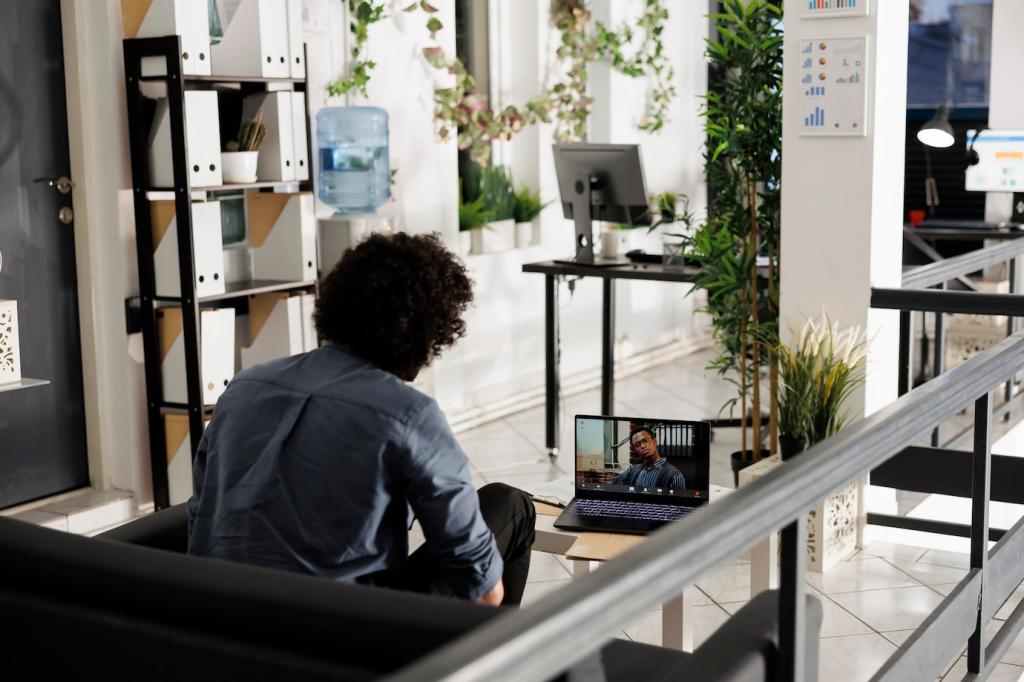Streamlined Focus: Efficient Organization Methods for Minimalist Workspaces
Chosen theme: Efficient Organization Methods for Minimalist Workspaces. Welcome to a calm, purposeful home for ideas that help you do more with less—fewer objects, fewer decisions, and more meaningful progress. Stay with us, share your insights, and subscribe for fresh, practical minimalism.
Define Your Minimalist Workspace Goals
Identify Essential Tools Only
List every tool you touch daily, then eliminate anything not used in a typical week. Keep one pen you love, one notebook, and your core devices. Ask readers to share their essential-three tools below.
Set Visual Noise Rules
Decide what may remain visible on your desk: one plant, one lamp, one device. Everything else earns a drawer or a wall mount. Post your personal visibility rules in the comments to inspire others.
Micro-Resets That Stick
Create a two-minute end-of-day reset: clear the surface, dock devices, empty your inbox to a triage list. Tiny, consistent rituals outcompete occasional deep cleans. Subscribe for printable reset checklists and weekly prompts.

Design Functional Zones
01
Primary Reach Map
Arrange high-frequency items within your forearm’s arc: keyboard, trackpad, notebook, water. Secondary items live one arm farther. Label your reach zones on paper for a week and share your discoveries with our community.
02
Single Surface Policy
Commit to one active surface only. Projects must fit that boundary. Overflow triggers finishing, discarding, or archiving. This constraint quietly accelerates decisions. Comment with the one item you removed to reclaim your surface today.
03
Transition Dock
Create a dedicated spot for in-transit items—returns, mail, borrowed gear. Keep it small to encourage throughput. Photograph your transition dock setup and tag us; we will feature smart, minimalist designs in future posts.
Smart Storage for Less Stuff
Vertical, Hidden, Accessible
Use a pegboard or rail to lift tools off the desk while keeping them reachable. Hide infrequent items in a single labeled box. If a box overflows, something goes. Share your favorite vertical storage hack.
Modular Trays and Grids
Shallow modular trays prevent junk layers. Assign each tray a role—inputs, tools, charging. Empty equals complete. Post a photo of your tray layout and tell others which module changed your workflow the most.
Label Lightly, Label Clearly
Two-word labels beat mystery rummaging. Use simple nouns: Cables, Pens, Adapters. Clear labeling speeds resets and helps guests respect your system. Comment with your three most effective labels for quick inspiration.
Digital Minimalism to Match the Desk
Keep hierarchy shallow: Area, Project, Asset. Standardize names with dates like 2025-10-16. Avoid cleverness; choose clarity. Share your top-level areas in the comments so others can borrow structures that actually work.


Digital Minimalism to Match the Desk
Practice TADA: Trash, Archive, Defer, Act. Touch each message once. Two minutes daily beats weekly dread. Tell us the filter or rule that saved you the most time this month, and subscribe for automation tips.
Cables, Power, and Peripherals
Use under-desk raceways, adhesive clips, and Velcro ties. Bundle by function, not length. Leave a single visible exit if necessary. Post your before-and-after cable photos to encourage someone starting today.


Cables, Power, and Peripherals
Place a surge protector where plugs remain accessible but unseen. Color-code chargers, label wattage, and standardize on USB-C where possible. Comment with your most reliable charging hub to help readers avoid clutter traps.

The Closing Ritual
End each day with a five-step sweep: surface clear, cables docked, inbox triaged, tomorrow’s priority written, water bottle cleaned. Share your ritual playlist and subscribe for a printable card to keep it visible.

Weekly Audit, Tiny Wins
On Fridays, remove one item, archive one project, and fix one annoyance. Momentum compounds. Comment with your three tiny wins this week to celebrate progress and encourage someone still overwhelmed.

Quarterly Purge with Rules
Set criteria before decluttering: last use, future use, irreplaceability. Decide, then act in timed sprints. Post your favorite decision rule so our community can adopt it for their next purge session.
Focus Gains Backed by Research
Studies on visual clutter show increased cognitive load and slowed task switching. A clear desk helps your brain allocate attention efficiently. Share one measurable improvement you noticed after simplifying—time, energy, or creative output.
A Small Story of a Smaller Desk
After downsizing to a narrow desk, I stopped staging piles and finished tasks sooner. Six lost minutes every morning searching vanished. Add your story in the comments; your experience can nudge someone toward change.
Community and Accountability
Minimalism sticks when we practice together. Pledge one action in the comments, invite a friend, and check back next week. Subscribe to receive our monthly minimalist challenge and celebrate progress as a community.

